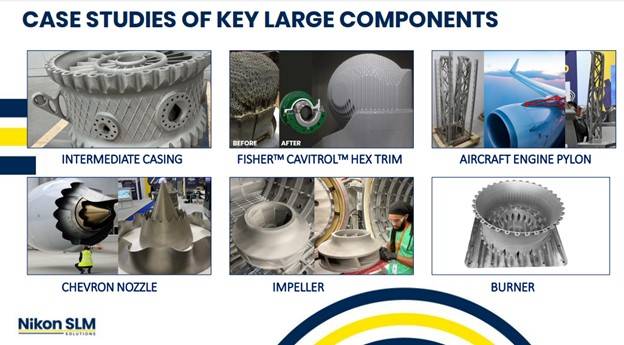In recent years, the field of additive manufacturing (AM) has witnessed significant advancements, particularly in the use of Nickel-based super-alloys such as Inconel 718. These materials are highly sought after in demanding applications within the oil and gas (O&G) sector, aerospace, and power generation industries. Known for their remarkable ability to maintain high strength at elevated temperatures, Nickel-based super-alloys are indispensable in environments that subject materials to extreme stress, thermal cycling, and corrosive conditions. Inconel 718, for instance, can endure temperatures up to 700°C while maintaining its mechanical properties, making it a critical material in turbine engines, rocket motors, and other high-performance applications.
Table of Contents
Challenges in Conventional L-PBF Technology
Despite the advantages, additive manufacturing of Nickel-based super-alloys, especially using Laser Powder Bed Fusion (L-PBF) technology, is not without its challenges. L-PBF, a popular AM technique, offers precision and the ability to produce complex geometries that are otherwise impossible with traditional manufacturing methods. However, one of the most significant limitations of conventional L-PBF technology is the maximum printable build volume. Typically, L-PBF systems are confined to relatively small build chambers, which restrict the size of the components that can be manufactured in a single print. This limitation is particularly critical in industries like O&G, where large, monolithic parts are often required.
The conventional approach to overcoming this limitation involves breaking down large components into smaller segments, printing them individually, and then joining them together through post-processing methods such as welding or brazing. While this approach allows for the creation of larger structures, it often results in a trade-off between mechanical properties and the overall size of the part. The process of joining can introduce defects, stress concentrations, and inconsistencies in material properties, which can compromise the integrity and performance of the final product. Additionally, the increased complexity and cost associated with post-processing make this approach less desirable for high-demand applications.
Nikon SLM Solutions: Innovating the Build Volume Paradigm
Recognizing the need for larger build volumes without compromising mechanical properties, Nikon SLM Solutions has developed a unique solution that addresses the limitations of conventional L-PBF technology. By leveraging their expertise in both optics and additive manufacturing, Nikon SLM Solutions has engineered a scalable L-PBF system that can produce larger parts while maintaining the mechanical properties and design complexity characteristic of the L-PBF process.
The innovation lies in the system’s ability to scale the build volume without sacrificing precision or material integrity. Nikon SLM Solutions has achieved this through a combination of advanced optics, multiple laser configurations, and optimized process parameters. The result is a machine capable of producing parts with a larger footprint, all while preserving the microstructural characteristics that give Nickel-based super-alloys their high-temperature strength and corrosion resistance.
One of the key technologies enabling this breakthrough is Nikon’s sophisticated laser control system. By using multiple lasers that can be individually controlled and synchronized, the system can cover a larger build area without losing focus or introducing thermal gradients that could lead to defects. This precise control ensures uniform energy distribution across the powder bed, resulting in consistent microstructures and mechanical properties throughout the entire part, regardless of its size.
Furthermore, Nikon SLM Solutions has optimized the powder handling and delivery systems to accommodate the larger build volume. This includes improvements in powder recoating mechanisms, real-time monitoring of the build process, and advanced cooling systems to manage the increased thermal load associated with larger prints. These innovations ensure that even as the build volume scales, the process remains stable and repeatable, which is critical for applications in industries where reliability and performance are paramount.
The Impact on Industry
The ability to produce larger, high-performance parts in a single build has far-reaching implications for industries that rely on Nickel-based super-alloys. In the O&G sector, for example, this technology could revolutionize the production of large valves, pumps, and other critical components that must withstand extreme conditions. By eliminating the need for post-processing and assembly of smaller segments, manufacturers can reduce lead times, lower costs, and improve the overall quality and durability of their products.
In aerospace, the ability to produce large, complex structures in a single build opens up new possibilities for lightweight, high-strength components that can enhance the performance and efficiency of aircraft and spacecraft. The scalability of the L-PBF process also aligns with the industry’s growing focus on sustainability, as it minimizes material waste and energy consumption compared to traditional manufacturing methods.
Conclusion
The advancements in additive manufacturing of Nickel-based super-alloys, particularly through the innovations introduced by Nikon SLM Solutions, represent a significant step forward in overcoming the limitations of conventional L-PBF technology. By scaling the build volume while maintaining the mechanical properties and design complexity that these materials require, Nikon is paving the way for new applications and opportunities across various industries. As the technology continues to evolve, it holds the promise of transforming the way we design and manufacture high-performance components, enabling new levels of efficiency, performance, and reliability in the most demanding environments.
Nikon SLM Solutions will be part of AM Conclave, MENA regions premier Additive Manufacturing and 3D Printing tradeshow and conference on 11-12 September 2024 at ADNEC Centre Abu Dhabi and as a part of their technical presentation will display the process quality of large and ultra large build areas, showing a parameter optimization project to detect suitable process windows and achievable mechanical properties. Nikon SLM Solutions will show relevant case studies at support of the findings.


